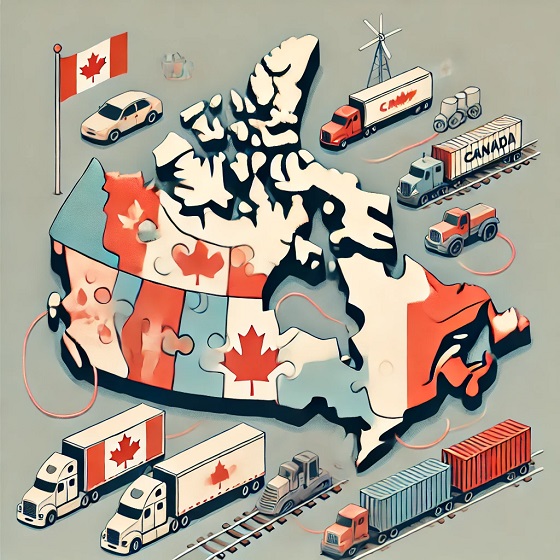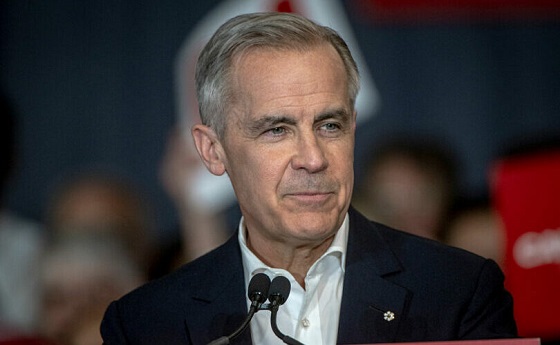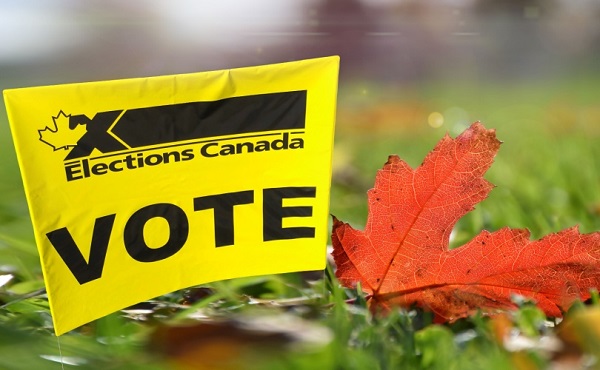Alberta
Watch: Ten new cases of COVID-19 in Alberta. Two people in intensive care

From the Province of Alberta
COVID-19 in Alberta March 14
Ten additional cases of COVID-19 have been confirmed, bringing the total number of cases in the province to 39.
Six of the new cases are in Calgary Zone and four are in Edmonton Zone.
Two of the new cases, one in Edmonton Zone and the other in Calgary Zone, have been admitted into intensive care. All other new cases are self-isolating at home and expected to make a full recovery.
Eight of the new cases have been confirmed to be related to international travel or to a previously confirmed case. Investigations are ongoing on the remaining two cases.
“Given the rise of the COVID-19 pandemic, we know parents, students, and school officials are very concerned. I want to assure all Albertans that their children’s safety is top of mind in all our decisions, and we are making the best public health decisions we can with the information we have, in this rapidly developing situation. We are prepared to make changes if and when the situation warrants it.”
School update
A conference call was held today with the chief medical officer of health and more than 500 representatives from Alberta’s school boards, school authorities, and education stakeholders.
On March 13, Alberta recommended that schools remain open at this time. The World Health Organization does not recommend school closures as the only way to prevent the spread of COVID-19 in children.
Alberta continues to monitor the province’s situation carefully. If the situation warrants it, the Alberta government could direct the closure of an individual school, a group of schools, an entire school division, or all schools in the province. This would be a decision of Cabinet’s emergency management committee.
In meantime, all schools should take steps to protect the health of students and staff:
- eliminate large gatherings of students
- ensure no more than 250 people are in the same room at any given time
- consider cancelling extracurricular activities that involve physical contact
A new guide has been developed to help schools and daycares reduce the risk of spreading COVID-19. The guide is available at alberta.ca/COVID19.
We will continue to update this document based on feedback received from education stakeholders.
Flight Information
There are more and more flights with passengers confirmed to have the virus. Albertans should self-monitor their air travel, so that public health officials can use their time to trace other contacts. Those who have recently returned to Alberta via a flight, are encouraged to visit alberta.ca/COVID19 for flight information and to self-isolate if found to be at risk of exposure.
Government will be posting flight information that includes the flight number, date and any seats on the flight that might be at risk of exposure to COVID-19. Passengers in affected seats are encouraged to self-isolate for 14 days after arrival in Canada and monitor for symptoms. Other passengers are not required to self-isolate but should monitor for symptoms as a precaution.
Certain professions may be exempt from travel restrictions. Any exemptions are being determined on a case-by-case basis after consultation with industry stakeholders. At this time, flight attendants and pilots are exempted from travel recommendations, provided they practice good hygiene and take precautions to limit their risk.
Updated resources
- Flight information is posted under the “Info for Albertans” section.
- The new guide for schools and child care programs has been posted under “Info for schools and child care centres.”
- A new information sheet on mass gatherings, including risk mitigation strategies, has been posted under “Public health restrictions on mass gatherings.”
- Information posters are available under “Resources” for organizations and businesses to distribute.
- Alberta Health Services has launched an online self-assessment tool to help Albertans determine whether they should get tested for COVID-19. Over 100,000 Albertans completed self-assessments within the first 24 hours.
Quick facts
- Alberta’s Provincial Operations Centre in Edmonton elevated from a level 2 to a level 3 – out of a possible 4. Level 3 indicates an increased amount of cross-government coordination through the Alberta Emergency Management Agency.
- The most important measures that Albertans can take to prevent respiratory illnesses, including COVID-19, is to practise good hygiene.
- This includes cleaning your hands regularly for at least 20 seconds, avoiding touching your face, coughing or sneezing into your elbow or sleeve, disposing of tissues appropriately, and staying home and away from others if you are sick.
- Anyone who has health concerns or is experiencing symptoms of COVID-19 should contact Health Link 811 to see if follow up testing is required.
- For recommendations on protecting yourself and your community, visit alberta.ca/COVID19.
Alberta
Low oil prices could have big consequences for Alberta’s finances

From the Fraser Institute
By Tegan Hill
Amid the tariff war, the price of West Texas Intermediate oil—a common benchmark—recently dropped below US$60 per barrel. Given every $1 drop in oil prices is an estimated $750 million hit to provincial revenues, if oil prices remain low for long, there could be big implications for Alberta’s budget.
The Smith government already projects a $5.2 billion budget deficit in 2025/26 with continued deficits over the following two years. This year’s deficit is based on oil prices averaging US$68.00 per barrel. While the budget does include a $4 billion “contingency” for unforeseen events, given the economic and fiscal impact of Trump’s tariffs, it could quickly be eaten up.
Budget deficits come with costs for Albertans, who will already pay a projected $600 each in provincial government debt interest in 2025/26. That’s money that could have gone towards health care and education, or even tax relief.
Unfortunately, this is all part of the resource revenue rollercoaster that’s are all too familiar to Albertans.
Resource revenue (including oil and gas royalties) is inherently volatile. In the last 10 years alone, it has been as high as $25.2 billion in 2022/23 and as low as $2.8 billion in 2015/16. The provincial government typically enjoys budget surpluses—and increases government spending—when oil prices and resource revenue is relatively high, but is thrown into deficits when resource revenues inevitably fall.
Fortunately, the Smith government can mitigate this volatility.
The key is limiting the level of resource revenue included in the budget to a set stable amount. Any resource revenue above that stable amount is automatically saved in a rainy-day fund to be withdrawn to maintain that stable amount in the budget during years of relatively low resource revenue. The logic is simple: save during the good times so you can weather the storm during bad times.
Indeed, if the Smith government had created a rainy-day account in 2023, for example, it could have already built up a sizeable fund to help stabilize the budget when resource revenue declines. While the Smith government has deposited some money in the Heritage Fund in recent years, it has not created a dedicated rainy-day account or introduced a similar mechanism to help stabilize provincial finances.
Limiting the amount of resource revenue in the budget, particularly during times of relatively high resource revenue, also tempers demand for higher spending, which is only fiscally sustainable with permanently high resource revenues. In other words, if the government creates a rainy-day account, spending would become more closely align with stable ongoing levels of revenue.
And it’s not too late. To end the boom-bust cycle and finally help stabilize provincial finances, the Smith government should create a rainy-day account.
Alberta
Governments in Alberta should spur homebuilding amid population explosion

From the Fraser Institute
By Tegan Hill and Austin Thompson
In 2024, construction started on 47,827 housing units—the most since 48,336 units in 2007 when population growth was less than half of what it was in 2024.
Alberta has long been viewed as an oasis in Canada’s overheated housing market—a refuge for Canadians priced out of high-cost centres such as Vancouver and Toronto. But the oasis is starting to dry up. House prices and rents in the province have spiked by about one-third since the start of the pandemic. According to a recent Maru poll, more than 70 per cent of Calgarians and Edmontonians doubt they will ever be able to afford a home in their city. Which raises the question: how much longer can this go on?
Alberta’s housing affordability problem reflects a simple reality—not enough homes have been built to accommodate the province’s growing population. The result? More Albertans competing for the same homes and rental units, pushing prices higher.
Population growth has always been volatile in Alberta, but the recent surge, fuelled by record levels of immigration, is unprecedented. Alberta has set new population growth records every year since 2022, culminating in the largest-ever increase of 186,704 new residents in 2024—nearly 70 per cent more than the largest pre-pandemic increase in 2013.
Homebuilding has increased, but not enough to keep pace with the rise in population. In 2024, construction started on 47,827 housing units—the most since 48,336 units in 2007 when population growth was less than half of what it was in 2024.
Moreover, from 1972 to 2019, Alberta added 2.1 new residents (on average) for every housing unit started compared to 3.9 new residents for every housing unit started in 2024. Put differently, today nearly twice as many new residents are potentially competing for each new home compared to historical norms.
While Alberta attracts more Canadians from other provinces than any other province, federal immigration and residency policies drive Alberta’s population growth. So while the provincial government has little control over its population growth, provincial and municipal governments can affect the pace of homebuilding.
For example, recent provincial amendments to the city charters in Calgary and Edmonton have helped standardize building codes, which should minimize cost and complexity for builders who operate across different jurisdictions. Municipal zoning reforms in Calgary, Edmonton and Red Deer have made it easier to build higher-density housing, and Lethbridge and Medicine Hat may soon follow suit. These changes should make it easier and faster to build homes, helping Alberta maintain some of the least restrictive building rules and quickest approval timelines in Canada.
There is, however, room for improvement. Policymakers at both the provincial and municipal level should streamline rules for building, reduce regulatory uncertainty and development costs, and shorten timelines for permit approvals. Calgary, for instance, imposes fees on developers to fund a wide array of public infrastructure—including roads, sewers, libraries, even buses—while Edmonton currently only imposes fees to fund the construction of new firehalls.
It’s difficult to say how long Alberta’s housing affordability woes will endure, but the situation is unlikely to improve unless homebuilding increases, spurred by government policies that facilitate more development.
-

 Alberta2 days ago
Alberta2 days agoGovernments in Alberta should spur homebuilding amid population explosion
-

 International2 days ago
International2 days agoHistory in the making? Trump, Zelensky hold meeting about Ukraine war in Vatican ahead of Francis’ funeral
-

 Alberta2 days ago
Alberta2 days agoLow oil prices could have big consequences for Alberta’s finances
-

 Business2 days ago
Business2 days agoIt Took Trump To Get Canada Serious About Free Trade With Itself
-

 2025 Federal Election2 days ago
2025 Federal Election2 days agoCarney’s budget is worse than Trudeau’s
-

 C2C Journal2 days ago
C2C Journal2 days ago“Freedom of Expression Should Win Every Time”: In Conversation with Freedom Convoy Trial Lawyer Lawrence Greenspon
-

 2025 Federal Election22 hours ago
2025 Federal Election22 hours agoColumnist warns Carney Liberals will consider a home equity tax on primary residences
-

 Opinion1 day ago
Opinion1 day agoCanadians Must Turn Out in Historic Numbers—Following Taiwan’s Example to Defeat PRC Election Interference








